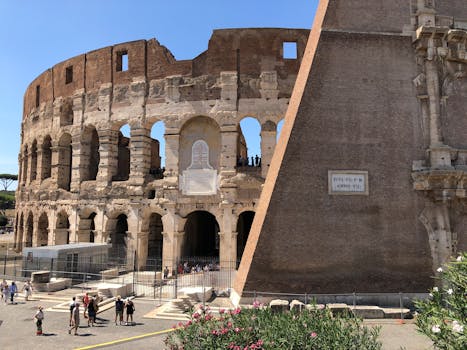
Traveling Through Time: How Europe’s Historical Heritage Shapes Modern Lifestyles in 2025
Traveling Through Time: How Europe’s Historical Heritage Shapes Modern Lifestyles in 2025. Europe, a continent steeped in history and heritage, has a profound impact on modern lifestyles. From the ancient ruins of Greece and Rome to the cultural traditions of the Renaissance, Europe’s rich past continues to shape our present. In this article, we’ll explore the ways in which Europe’s historical heritage influences modern lifestyles, and how travelers can experience this firsthand.
Introduction to Europe’s Historical Heritage
Europe’s historical heritage is a treasure trove of cultural, architectural, and artistic riches. The continent is home to some of the world’s most famous landmarks, including the Eiffel Tower, the Colosseum, and Big Ben. These iconic structures not only attract millions of tourists each year but also serve as a reminder of Europe’s complex and fascinating history. From the medieval castles of Scotland to the Baroque palaces of Vienna, Europe’s historical heritage is a testament to the continent’s enduring legacy.
The Impact of Historical Heritage on Modern Lifestyles
Europe’s historical heritage has a profound impact on modern lifestyles. The continent’s rich cultural traditions, such as its cuisine, music, and art, continue to shape our daily lives. For example, Italian cuisine, with its emphasis on fresh ingredients, simple preparation, and rich flavors, has become a staple of modern dining. Similarly, the works of European artists, such as Leonardo da Vinci and Vincent van Gogh, continue to inspire and influence contemporary art. In addition, Europe’s historical heritage has also shaped modern architecture, with many contemporary buildings drawing inspiration from ancient and medieval structures.
Cultural Traditions and Historical Heritage
Cultural traditions play a significant role in shaping modern lifestyles in Europe. The continent is home to a diverse array of festivals, holidays, and customs, each with its own unique history and significance. For example, the Tomatina festival in Spain, where participants throw tomatoes at each other, has its roots in a 19th-century food fight. Similarly, the Christmas markets of Germany and Austria, with their emphasis on handmade crafts, food, and drink, are a continuation of medieval trading traditions. These cultural traditions not only provide a glimpse into Europe’s rich history but also offer a unique and immersive experience for travelers.
Experiencing Europe’s Historical Heritage
Travelers can experience Europe’s historical heritage firsthand by visiting the continent’s many museums, landmarks, and cultural festivals. From the Louvre in Paris to the Uffizi Gallery in Florence, Europe’s museums are a treasure trove of artistic and cultural riches. Similarly, landmarks such as the Acropolis in Athens and the Roman Forum in Rome offer a glimpse into the continent’s ancient past. In addition, cultural festivals, such as the Venice Carnival and the Oktoberfest in Munich, provide a unique and immersive experience of Europe’s historical heritage.
Conclusion
In conclusion, Europe’s historical heritage has a profound impact on modern lifestyles. From cultural traditions to architectural landmarks, the continent’s rich past continues to shape our present. By experiencing Europe’s historical heritage firsthand, travelers can gain a deeper understanding of the continent’s complex and fascinating history, and appreciate the ways in which it influences modern lifestyles.





